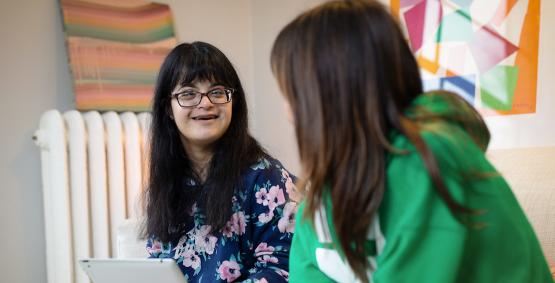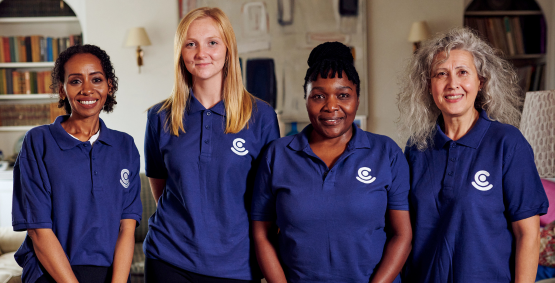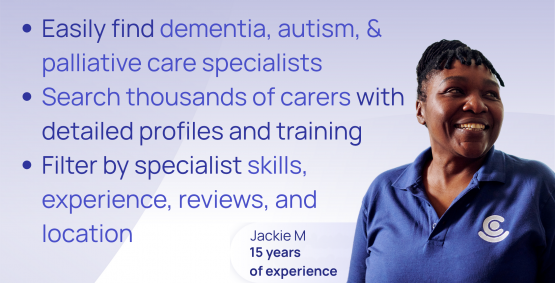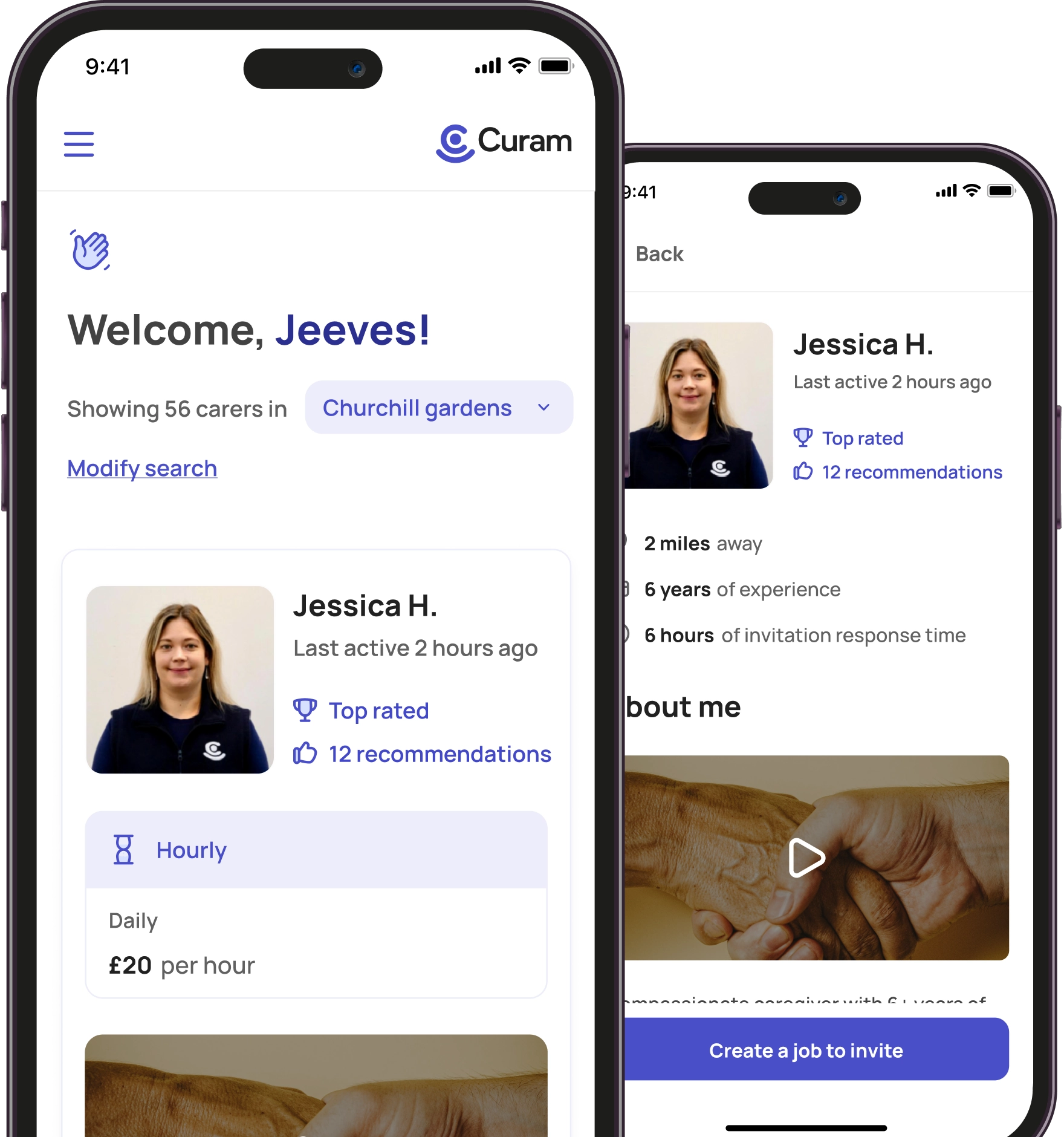Curam Team
December 02, 2020

A learning disability is a reduced intellectual ability that affects someone throughout their lifetime, causing them to find certain day-to-day activities more difficult. Someone with a learning disability may take longer to learn and find it harder to process complex information.
Some individuals with a learning disability need more help than others, but they often need support when interacting with other people or learning new skills. Below, we discuss the different types, symptoms, and causes, as well as how to get a diagnosis for a learning disability.
Statistics on learning disabilities in the UK
· Approximately 1.5 million people have a learning disability in the UK.
· About 350,000 people in the UK have a severe learning disability.
· Around 40% of autistic people have a learning disability.
· About 30% of people with epilepsy have a learning disability.
What are symptoms of a learning disability?
Different people with learning disabilities have different symptoms, and people are affected in their own, individual way. However, people with a learning disability often find it hard to:
· Understand complicated information
· Develop new skills
· Cope independently
· Adapt behaviour to different situations
· Interact with others
· Control their behaviour
People with a mild learning disability are able to talk easily and will not need as much support. Others, with a more profound learning disability may need full time care and may also have physical disabilities.
Some symptoms that people with learning disabilities experience are caused by associated conditions of learning disabilities, such as cerebral palsy.
Challenging behaviour
Challenging behaviour (hitting, kicking, tantrums, throwing, self-harming) is not a learning disability, but people with a disability can show challenging behaviour.
There are ways to manage challenging behaviour and it is important to understand it is often a way for someone to communicate that they are in pain or need something.
Special educational needs and disabilities (SEND)
Children and young people with learning disabilities may also have special education needs. This means that a child can find it difficult to:
· Socialise and make friends
· Read and write
· Understand things
· Concentrate
· Carry out physical tasks
Children with SEND may be able to receive extra support at school (including speech therapy), or receive an education, health and care plan (EHC plan) that identifies the support a person needs and sets up this support.
What are the different types of learning disabilities?
There are different types of learning disabilities, based on the severity of a person’s symptoms and the effect their learning disability has on their life. Someone can have a:
· Mild learning disability.
· Moderate learning disability.
· Severe learning disability.
· Profound and multiple learning disability (PMLD)
Mild learning disability
A mild learning difficulty can mean that someone needs help with activities such as managing finances, but will not need as much support as people with a more severe learning disability. People with mild learning disabilities may need longer than usual to develop new skills but they are typically able to live alone, travel alone and work.
Moderate learning disability
Some people with a moderate learning difficulty may need help with mobility, personal care and communication, but not for definite. The symptoms of a moderate learning disability will have more of an effect on a person’s daily life than those of a mild learning disability.
Severe learning disability
People with severe learning disabilities will need help with daily activities such as eating, dressing and washing. They will also need help with mobility and communication.
A profound and multiple learning disability (PMLD)
A PMLD means that someone’s independence and communication is significantly affected. A person with PMLD will need help with eating, washing and bathroom assistance. The symptoms of profound and multiple learning disabilities can include:
· Difficulties with sight
· Difficulties with hearing
· Speech problems
· Difficulty with movement
Someone with a PMLD will typically still be able to communicate and make decisions. With the right support and care, people with profound and multiple learning disabilities can have a good quality of life and do activities they enjoy.
What is the difference between a learning disability and a learning difficulty?
A learning disability is linked to an overall cognitive impairment and affects a person’s intellect, whereas a learning difficulty does not affect general intelligence (IQ). Moreover a learning difficulty tends to affect a specific form of learning, whereas a learning disability usually affects many parts of someone’s life.
It is possible to have both a learning disability and a learning difficulty. Moreover, some people experience more than one learning difficulty at once, and someone can have a mild, moderate or severe learning difficulty. The most commonly known learning difficulties include:
· Dyslexia
· Dyspraxia
· Attention deficit hyperactivity disorder (ADHD)
Dyslexia
Dyslexia is the most well-known learning difficulty. It affects people’s writing and speaking as it makes processing information and concentrating difficult.
Dyspraxia
Dyspraxia affects a person’s movement and coordination. This can make driving, balancing and playing sport difficult.
Attention deficit hyperactivity disorder (ADHD)
ADHD affects a person’s behaviour. It can make someone feel restless, act impulsively or find it hard to concentrate.
What causes a learning disability?
A learning disability can be caused before, during or just after birth, whilst a baby’s brain is still developing. Sometimes there is no known cause for a learning disability. However, a learning disability can be caused by:
· An accident or illness that occurs whilst a mother is pregnant.
· A baby inheriting certain genes.
· Not enough oxygen getting to a child’s brain, or a trauma to the head whilst being born.
· A child being born too early.
· An early childhood illness (such as meningitis), accidents or seizures.
Getting diagnosed with a learning disability.
It can be upsetting to get a diagnosis, but it is important to do so as it allows people to access the care and support they need during their life.
· A learning disability can be diagnosed at any time in a person’s life.
· It is possible to diagnose someone at birth or during their early childhood.
· Some people never get diagnosed or wait years before getting diagnosed.
Talk to a GP if you are worried about your child’s development. Difficulties with development can be caused by a child’s eyesight or hearing, a condition such as autism or a learning disability.
After receiving a diagnosis, a person’s needs should be assessed by social services to help them find the support and care they need.
Support for people with learning disabilities
If you don't know where to start with hiring a learning disability carer and need care or support, download the Curam app. We want to support you as best as we can by allowing you to choose the right carer and care type for you or your loved one.
There are other places you can go to find additional support and get in touch with people who are going through a similar situation:
· Call the Mencap Learning Disability Helpline - 0808 808 1111
· Find local learning disabilities services on the NHS.
· These apps can help people with a learning disability.






 Vetted & approved carers
Vetted & approved carers
 DBS checked & insured
DBS checked & insured
 Back
Back







